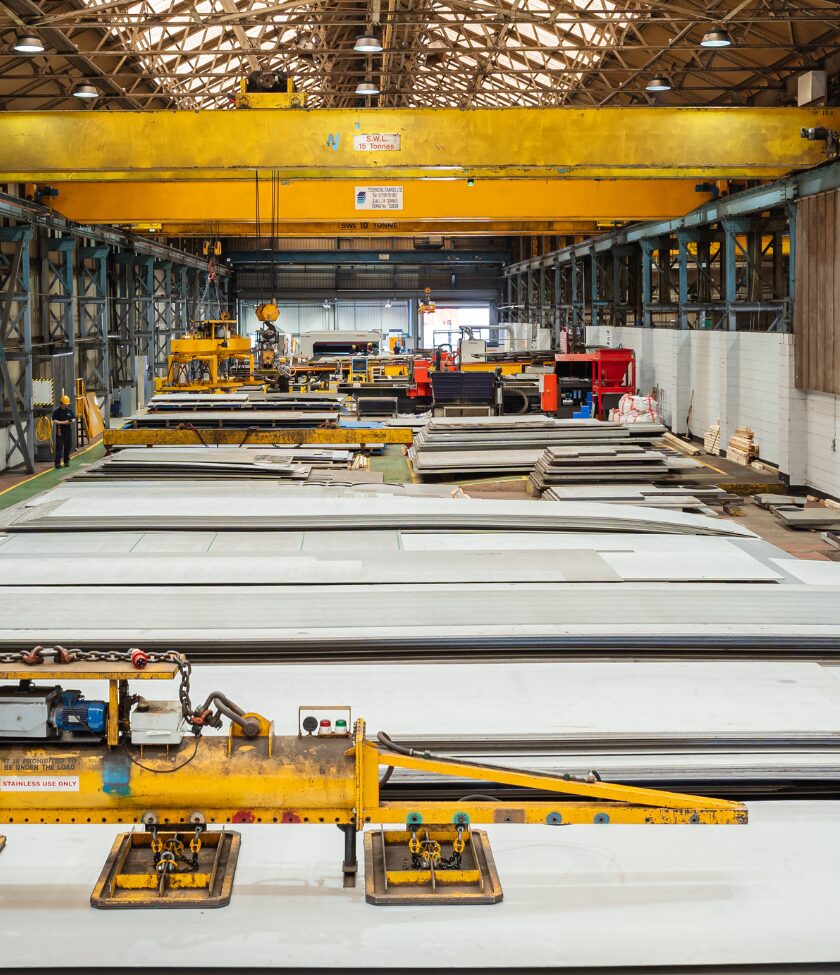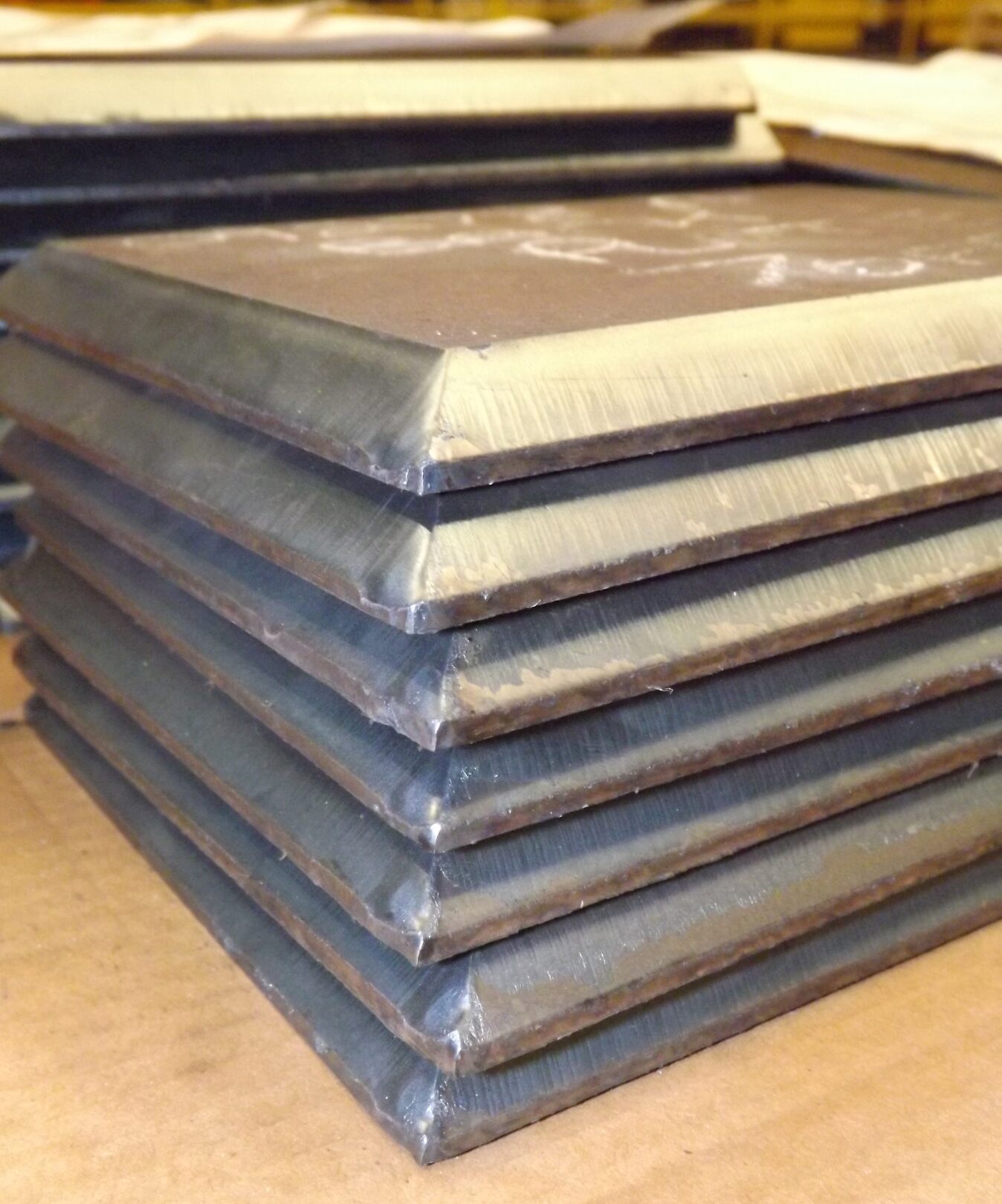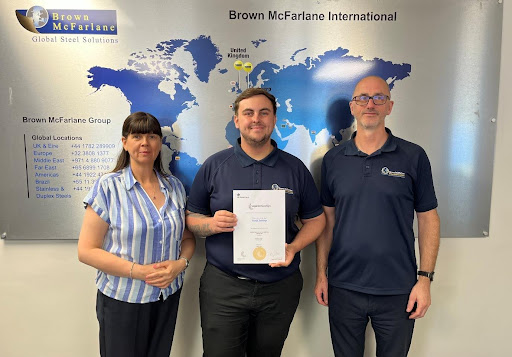Precision and efficiency are at the heart of modern manufacturing and fabrication. Plate cutting, a crucial first step in countless projects, lays the groundwork for everything from structural components to intricate machinery parts.
At Brown McFarlane, we understand that the success of an entire project hinges on the quality of this initial cut. Precise, clean plate cutting not only reduces material waste but also minimises the need for secondary plate processing and ensures a perfect fit during assembly.
Common Plate Cutting Techniques
The method chosen for plate cutting has a significant impact on the final product’s accuracy, finish and cost. Each technique offers a unique set of capabilities suited to different materials, thicknesses and project complexities. Understanding these differences is essential for engineers, fabricators, and procurement managers aiming to optimise their production processes.
Laser Cutting
Laser profile cutting is a highly precise method perfectly suited for advanced engineering applications. At Brown McFarlane, we utilise cutting-edge technology to achieve outstanding results, powered by our state-of-the-art Durma 10kW Fibre Laser. This innovative machine delivers exceptional accuracy and speed, capable of cutting steel plates as large as 12m by 3m. It effortlessly handles carbon steel up to 12.5mm thick and stainless steel up to 25mm, ensuring superior performance for even the most demanding projects.
Why Choose Laser Profile Cutting?
- Unmatched Precision: Achieves ultra-accurate tolerances of +/-0.25mm to +/-0.5mm, depending on material and thickness.
- Ideal for Complex Designs: Perfect for intricate, detailed cuts guided by CAD/CNC files.
- Exceptional Edge Quality: Delivers smooth, clean edges with minimal post-processing required.
- Minimal Heat-Affected Zone (HAZ): Reduces the risk of material warping and preserves the integrity of the workpiece.
- Material Versatility: Capable of cutting challenging materials like stainless steel with precision.
- Energy Efficiency: More precise and energy-efficient compared to plasma cutting, making it a cost-effective solution for thinner materials.
Plasma Cutting
Plasma cutting is a highly versatile technique that delivers clean, precise cuts on steel and other electrically conductive materials. Using ionized gas heated to extreme temperatures, this method ensures accurate contour cuts with exceptional speed and reliability. Supported by the latest CAD technology, our team of expert CAD technicians ensures accurate and precise plasma-cut steel parts, tailored to your exact needs.
Why Choose Plasma Cutting?
- Fast Turnaround Times: Plasma cutting is one of the quickest methods available for steel plate processing, enhancing productivity.
- Improved Cut Quality: With advanced technology, we achieve excellent surface finishes with reduced angular deviations.
- Enhanced Accuracy: Our True Hole processes ensure precise inner and outer contours, eliminating the need for additional drilling or machining.
- Versatility and Capacity: Internally produce 1:1 ratio holes and slots between 5mm–25mm, with exceptional contour accuracy.
- Thickness: Up to 45mm, depending on the end use.
Waterjet Cutting
Waterjet cutting is a precise and versatile technique that uses a high-pressure stream of water, often combined with abrasive materials like garnet, to cut through steel and other materials with exceptional accuracy. Unlike laser or plasma cutting, this cold-cutting method eliminates the risk of thermal damage, making it ideal for cutting steel plates and other temperature-sensitive materials.
Why Choose Waterjet Cutting for Steel?
- No Heat-Affected Zone: The absence of heat ensures no thermal distortion or alteration of the steel’s properties.
- Exceptional Precision: With a jet width of just 1.2mm, waterjet cutting delivers intricate designs and smooth edges requiring minimal finishing.
- Environmentally Friendly: This process produces minimal hazardous materials, making it safer for the environment and your workspace.
- Wide Material Compatibility: Suitable for cutting soft materials like rubber and hard substances like steel or granite.
- Maximum Thickness: Up to 250mm
Oxy-Gas Cutting
Gas cutting, also called oxy-fuel cutting, is a proven, cost-effective, and versatile method for processing steel plates, especially thick carbon steel. At Brown McFarlane, we leverage advanced oxy-gas cutting technology to deliver precise, high-quality steel components tailored to your project needs. Our 8-head gas cutting machine and expansive 30-metre cutting bed allow us to handle both bulk production and oversized workpieces with ease.
Why Choose Oxy-Gas Cutting?
- Affordable and Effective: A cost-efficient solution for precise, high-quality cuts without breaking the budget.
- Cuts Through Thick Steel: Designed to handle steel plates up to an impressive 300mm in thickness.
- High-Speed Performance: Equipped with 8 cutting heads and a 30-metre cutting bed for fast, efficient production.
- Unmatched Versatility: Perfect for a wide range of fabrication needs, from intricate components to large-scale workpieces.
- Precision and Reliability: Skilled operators ensure clean, square cuts, reducing the need for additional finishing work.
Applications of Plate Cutting Across Industries
Plate cutting plays a crucial role across industries, ensuring steel plates are precisely shaped to meet exact specifications. Using advanced techniques such as laser cutting, plasma cutting and waterjet cutting, this process guarantees the precision needed to produce high-quality components.
This level of accuracy is essential for creating parts that deliver optimal performance, reliability and durability in sectors such as construction, energy, and manufacturing. By tailoring steel plates to exact requirements, plate cutting helps industries meet rigorous safety standards and operational demands.
- Oil and Gas: Plate cutting is key in fabricating components for offshore platforms, pipelines, pressure vessels, and other structures that need to withstand harsh environments and high pressures.
- Nuclear Power: The nuclear sector relies on precisely cut steel plates for pressure vessels, reactor components, and structural supports, ensuring safety and efficiency in power generation.
- Defence: In the defence industry, plate cutting is used to produce armoured vehicle components, naval ship parts, and other specialised equipment where strength and precision are essential.
- Renewable Energy: From wind turbine towers to hydroelectric components, plate cutting ensures the production of durable and efficient structures for renewable energy projects.
- General Engineering: General engineering applications require custom steel plates for manufacturing machinery, industrial equipment, and infrastructure projects, all of which benefit from precise cutting techniques.
By employing advanced cutting techniques, industries can produce components with exceptional precision, ensuring reliability and top performance in even the most demanding applications.
Choosing the Right Cutting Method for Your Project
Selecting the most appropriate cutting technique requires a careful evaluation of several project-specific factors. Making the right choice ensures that your components meet design specifications while maintaining cost-efficiency. Consider the following factors to ensure you select the best plate cutting method for your requirements.
Material Type and Thickness
Oxy-gas is ideal for very thick carbon steel, while laser cutting excels on thinner metals. Waterjet can handle almost any material type and thickness without thermal distortion. Plasma offers versatility across a wide range of conductive metals and thicknesses.
Precision and Tolerance Requirements
For projects demanding the highest accuracy and intricate designs, laser and waterjet cutting are the superior options. Plasma cutting provides a good balance, while oxy-gas is suited for applications with more lenient tolerances.
Edge Finish Quality
If a smooth, clean edge with minimal need for secondary processing is a priority, waterjet and laser cutting are preferred. Plasma and oxy-gas cuts may require grinding or machining to achieve a finished edge.
Project Budget and Volume
For high-volume production of simple shapes, oxy-gas and plasma cutting are often more cost-effective due to their speed. Laser and waterjet cutting may be more expensive but provide value through precision and superior finish, potentially reducing overall project costs by eliminating subsequent steps.
If you want to learn more about which steel plate cutting method is best suited to your applications, contact our expert team today for tailored support.
Choosing the Right Cutting Method for Your Project
Selecting the right plate cutting technique is essential, as it directly impacts the quality, cost, and timeline of your project. Understanding the unique strengths and limitations of each plate cutting method allows you to make an informed decision tailored to your specific needs.
By partnering with an experienced steel processing provider like Brown McFarlane, you gain access to our extensive selection of high quality steel plates as well as our advanced plate cutting technology and the expertise required to achieve superior results. Our commitment to precision, quality, and efficiency ensures every component we produce meets your exacting standards.
Speak to our experts today to discover how our plate cutting technology can elevate your project!



